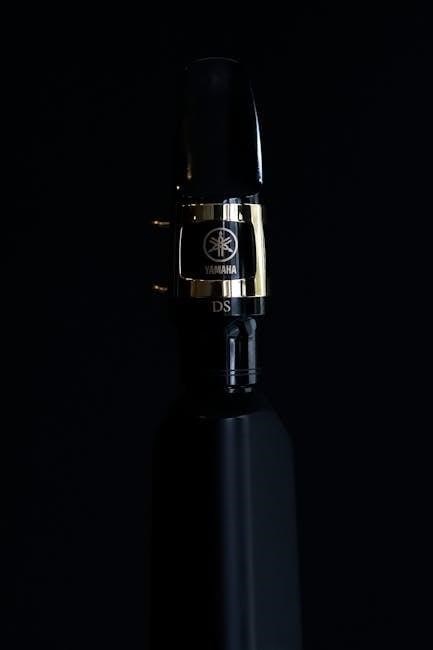Wolfgang Amadeus Mozart’s Clarinet Concerto in A Major, K.622, composed in 1791, is a pinnacle of Classical music. Its lyrical elegance and expressive depth make it a cornerstone of the clarinet repertoire, with PDF sheet music widely accessible.
1.1 Historical Context of the Concerto
Mozart’s Clarinet Concerto in A Major, K.622, was composed in 1791, the year of his death, marking his final instrumental work; It was written for the clarinetist Anton Stadler, a close friend and virtuoso of the instrument. The concerto showcases Mozart’s mastery of Classical music, blending elegance and emotional depth. Its creation coincided with a period of financial and personal challenges for Mozart, yet it remains a testament to his artistic genius. The work was groundbreaking, as it was the first concerto by a major composer to feature the clarinet, highlighting its expressive qualities. The concerto’s historical significance is further underscored by its influence on later composers, cementing its place in the classical repertoire. Today, the PDF sheet music of this concerto is widely available, allowing musicians and enthusiasts to explore its timeless beauty.
1.2 Key Features of the Clarinet Concerto
Mozart’s Clarinet Concerto in A Major, K.622, is renowned for its lyrical beauty and structural sophistication. The concerto is divided into three movements: the lively Allegro, the expressive Adagio, and the vibrant Rondo (Allegro). The work showcases the clarinet’s warm, expressive range, with intricate melodies and ornaments that highlight the instrument’s technical and emotional capabilities. The concerto’s orchestration is minimalist yet effective, featuring a balance of strings, winds, and brass that complements the clarinet’s solos. The PDF sheet music reveals Mozart’s meticulous attention to detail, with dynamic contrasts and harmonic richness that define the Classical era. The concerto’s technical demands and expressive depth make it a benchmark for clarinetists, while its melodic charm appeals to a broad audience. Its enduring popularity is a testament to Mozart’s genius in blending virtuosity with musical elegance, ensuring its place as a cornerstone of the classical repertoire.
1.3 Importance of the Clarinet Concerto in Classical Music
Mozart’s Clarinet Concerto in A Major, K.622, holds a pivotal role in classical music history. Composed in 1791, it is Mozart’s final instrumental work and one of the first major concertos written for the clarinet, elevating the instrument’s status in classical music. The concerto’s lyrical and technical qualities have made it a cornerstone of the clarinet repertoire, influencing generations of composers and clarinetists. Its availability in PDF format has democratized access, allowing musicians worldwide to study and perform this masterpiece. The concerto’s enduring popularity lies in its perfect balance of virtuosity and emotional depth, exemplifying the Classical era’s aesthetic ideals. As a result, it remains a cornerstone of orchestral and chamber music, celebrated for its historical significance and timeless beauty. Its influence extends beyond the classical genre, inspiring adaptations and transcriptions across various musical styles, ensuring its place as a timeless masterpiece in the world of music.

Sheet Music and PDF Availability
Mozart’s Clarinet Concerto sheet music and PDF files are freely available online, offering high-quality downloads for musicians and enthusiasts. Platforms like MuseScore and Musopen provide easy access to both solo and orchestral parts.
2.1 Where to Find Free PDF Sheet Music
Free PDF sheet music for Mozart’s Clarinet Concerto is readily available online. Platforms like MuseScore and Musopen offer high-quality downloads, providing both solo and orchestral parts. These websites cater to musicians, students, and enthusiasts, ensuring access to Mozart’s masterpiece. Additionally, repositories like the Clarinet Institute and various classical music archives host PDF versions, often with accompanying MIDI files for practice; Many sites allow free downloads without copyright restrictions, making it easy to obtain and print the concerto. Some platforms also offer transpositions and arrangements, accommodating different skill levels. Whether for performance or study, these resources ensure that Mozart’s Clarinet Concerto remains accessible to everyone.
2.2 Downloading and Printing the Clarinet Concerto PDF
Downloading and printing the Clarinet Concerto PDF is a straightforward process. Most platforms require users to create a free account or simply download directly. Websites like MuseScore and Musopen provide clear download buttons, allowing access to the full score or individual parts. Once downloaded, the PDF can be printed on standard paper, ensuring clarity and readability. Some sites offer multiple formats, such as transposed versions for different clarinet types, to suit various needs. Printing the concerto allows musicians to practice and perform with ease. Additionally, many PDF files are optimized for high-quality printing, preserving the original musical notation. This accessibility makes Mozart’s masterpiece accessible to clarinetists worldwide, fostering both practice and performance.
2.3 Licensed and Copyright-Free Versions
Licensed and copyright-free versions of Mozart’s Clarinet Concerto in A Major, K.622, are widely available online. Platforms like Musopen.org and MuseScore offer high-quality PDF downloads under public domain licenses, ensuring legal and free access. Licensed versions often include additional resources, such as performance notes or transposed parts, while maintaining the integrity of Mozart’s original composition. Copyright-free versions are ideal for educational purposes, allowing unlimited use without restrictions. Many websites provide both full scores and individual parts, catering to soloists and orchestras alike. These versions are meticulously formatted for clarity and ease of use. Whether for personal practice or professional performance, accessing Mozart’s Clarinet Concerto in PDF format is convenient and legally straightforward. This ensures that the concerto remains accessible and performable, preserving its legacy in classical music.

Structure of the Clarinet Concerto
Mozart’s Clarinet Concerto in A Major, K.622, consists of three movements: the lively Allegro, the serene Adagio, and the vibrant Rondo (Allegro). Each movement showcases the clarinet’s expressive range and the orchestra’s harmonic balance.
3.1 First Movement: Allegro
The first movement of Mozart’s Clarinet Concerto, marked Allegro, is a vibrant and dynamic opening that sets the tone for the entire piece. Composed in sonata form, it features a lively dialogue between the clarinet and the orchestra, with intricate melodic lines and rhythmic vitality. The movement begins with a bold orchestral introduction, establishing the main thematic material, before the clarinet enters with its characteristic warmth and agility. The interplay between the soloist and the orchestra is seamless, showcasing Mozart’s mastery of orchestration. The Allegro is notable for its flowing phrases, delicate ornamentation, and a sense of forward momentum, all of which highlight the clarinet’s expressive capabilities. Clarinetists often find this movement technically demanding due to its rapid passages and nuanced phrasing, requiring both precision and musicality to execute effectively. The movement’s structure and thematic development exemplify Mozart’s genius in blending elegance with virtuosity, making it a cornerstone of the clarinet repertoire.
3.2 Second Movement: Adagio
The Adagio movement of Mozart’s Clarinet Concerto is a masterful expression of lyrical beauty and emotional depth. Marked by a slow and contemplative tempo, this movement showcases the clarinet’s ability to convey profound sentiment. The solo instrument sings with a cantabile quality, accompanied by a lush orchestral texture that underscores the music’s intimate and reflective nature. Mozart’s use of phrasing and dynamics creates a sense of vulnerability, while the harmonic structure adds complexity and richness. Clarinetists must employ a wide range of tonal colors and phrasing techniques to capture the movement’s expressive essence. The Adagio is often considered the heart of the concerto, offering a stark contrast to the outer movements’ virtuosic energy. Its enduring popularity stems from its ability to evoke deep emotional resonance, making it a beloved segment of the concerto for both performers and audiences.
3.3 Third Movement: Rondo (Allegro)
The Rondo (Allegro) movement of Mozart’s Clarinet Concerto is a lively and virtuosic conclusion to the work. This final movement is structured as a rondo, featuring a recurring main theme that alternates with contrasting episodes. The clarinet engages in a playful dialogue with the orchestra, showcasing its agility and technical brilliance. Mozart’s writing demands precise articulation, rapid passagework, and a strong sense of rhythm from the soloist. The movement’s vibrant energy and humor provide a stark contrast to the introspective nature of the Adagio, creating a satisfying balance to the concerto. Clarinetists must master intricate fingerings and breath control to navigate the movement’s demanding passages, which include arpeggios, trills, and leaps. The Rondo culminates in a triumphant finale, leaving a lasting impression of joy and virtuosity. This movement is a testament to Mozart’s mastery of instrumental writing and his ability to craft music that is both technically challenging and musically rewarding.

Musical Elements and Techniques
Mozart’s Clarinet Concerto showcases masterful melodic composition, intricate ornamentation, and a rich harmonic structure. The interplay between the clarinet and orchestra highlights rhythmic complexity, dynamic contrasts, and elegant phrasing, exemplifying Mozart’s compositional brilliance.
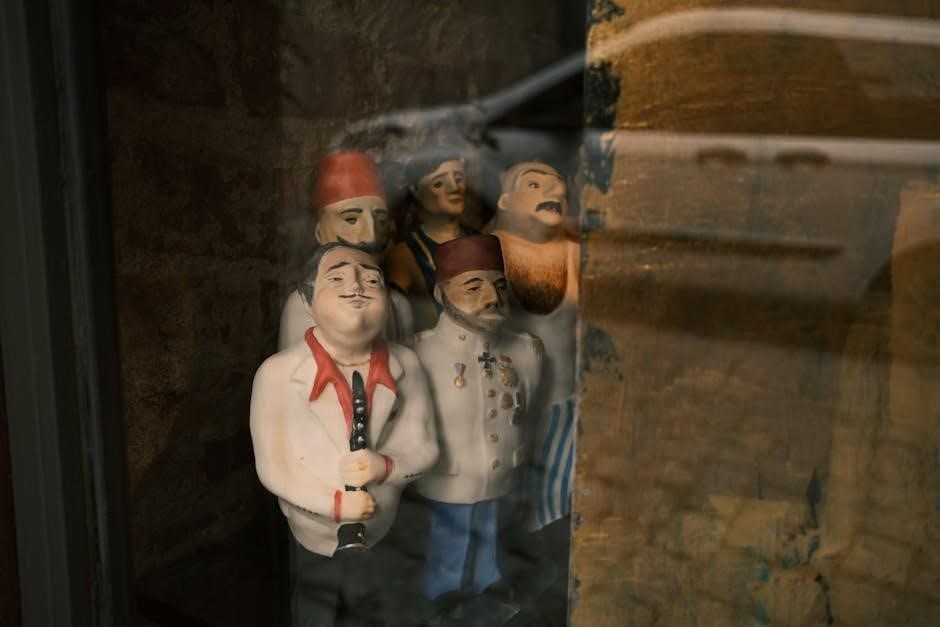
4.1 Melodic Composition and Ornamentation
Mozart’s Clarinet Concerto is renowned for its lyrical and expressive melodies, which showcase the clarinet’s warm, rich timbre. The concerto’s flowing lines are adorned with delicate ornamentation, requiring precise phrasing and nuanced articulation. These melodic motifs are intricately woven, blending technical brilliance with emotional depth. The clarinet’s expressive range is highlighted through soaring themes and subtle embellishments, creating a sense of elegance and refinement. Mozart’s mastery of melodic composition ensures that the clarinet shines as a solo instrument, while the orchestral accompaniment provides a lush, harmonic foundation. The interplay between the soloist and the orchestra is seamless, with ornamentation adding a layer of sophistication to the overall structure. This balance of melodic beauty and technical complexity makes the concerto a timeless masterpiece, celebrated for its lyrical grace and artistic brilliance.
4.2 Harmonic Structure and Orchestration
Mozart’s Clarinet Concerto in A Major, K.622, features a sophisticated harmonic structure that underscores the clarinet’s expressive qualities. The concerto is orchestrated for a classical ensemble, including strings, woodwinds, and brass, creating a balanced and refined accompaniment. The harmonic progression is rooted in Classical tonality, with modulations that enhance the emotional depth of the music. Mozart’s use of secondary themes and transitional passages adds complexity to the harmonic framework, while maintaining clarity and coherence. The orchestration is meticulously designed to highlight the clarinet’s warm timbre, often pairing it with complementary textures from the strings and woodwinds. Brass instruments, such as horns, provide subtle harmonic support without overpowering the soloist. This masterful blend of harmony and orchestration creates a rich, dynamic sound that elevates the clarinet to its rightful prominence, showcasing Mozart’s genius in integrating the instrument into the classical orchestral tradition.
4.3 Rhythmic Complexity and Tempo Changes
Mozart’s Clarinet Concerto in A Major, K.622, showcases intricate rhythmic patterns and nuanced tempo changes, enhancing its musical depth. The Allegro movements feature brisk tempos with complex interplay between the clarinet and orchestra, while the Adagio movement provides a contrast with its slower, expressive pacing. Tempo changes are strategically employed to heighten dramatic tension and emotional impact, particularly in the transition between movements. The clarinet’s rhythmic dexterity is highlighted through virtuosic passages, often accompanied by subtle shifts in orchestral texture. Mozart’s mastery of rhythm and tempo creates a dynamic interplay, allowing the clarinet to shine as both a melodic and rhythmic protagonist. These elements, available in PDF sheet music, demonstrate Mozart’s innovative approach to rhythm and tempo, making the concerto a landmark in classical music.

Performance and Interpretation
Mozart’s Clarinet Concerto demands exceptional technical precision and expressive nuance. Performers must balance the clarinet’s warm tones with orchestral dynamics. Interpretations vary, blending historical authenticity with modern stylistic choices, ensuring the piece remains timeless and captivating.
5.1 Challenges for Clarinetists
Performing Mozart’s Clarinet Concerto presents significant challenges for clarinetists. The concerto’s technical demands, including intricate ornamentation and complex phrasing, require exceptional precision and control. Clarinetists must master the instrument’s upper register, as the concerto frequently exploits the clarinet’s bright and agile higher notes. Additionally, the piece demands expressive nuance, particularly in the Adagio movement, where lyrical phrasing and dynamic subtlety are essential. The clarinetist must also navigate rhythmic intricacies, especially in the Rondo finale, where syncopation and tempo changes test accuracy. Balancing the clarinet’s tone against the orchestra while maintaining musicality is another critical challenge. Lastly, the concerto’s length and stamina requirements make it a true test of endurance. These challenges highlight why the piece is considered a benchmark of technical and artistic mastery for clarinetists.
5.2 Orchestral Accompaniment and Balance
Mozart’s Clarinet Concerto features a meticulously crafted orchestral accompaniment that complements the solo clarinet with precision and elegance. The orchestra, comprising strings, woodwinds, and brass, provides a rich harmonic and rhythmic foundation while maintaining a delicate balance with the soloist. The strings often supply a lush, legato underpinning, while the woodwinds, including flutes and bassoons, add textural complexity and rhythmic interplay. The brass section, particularly the horns, contributes moments of dramatic emphasis without overpowering the clarinet. Achieving the ideal balance requires careful attention to dynamics, phrasing, and articulation from both the orchestra and the soloist. This interplay ensures the clarinet’s expressive qualities remain at the forefront, while the orchestra enhances the overall musical narrative. The concerto’s orchestration exemplifies Mozart’s mastery in blending individual timbres to create a cohesive and engaging musical experience.
5.3 Historical vs. Modern Interpretations

Mozart’s Clarinet Concerto has undergone significant interpretative evolution since its composition in 1791. Historically, performances adhered to Classical-era practices, emphasizing precise articulation, moderate tempos, and minimal vibrato. Clarinetists like Anton Stadler, for whom the concerto was written, used early clarinet designs with narrower bores, producing a brighter, more agile sound. Orchestras of the time were smaller, and balance was achieved through restrained dynamics and clear phrasing. In contrast, modern interpretations often feature larger orchestras, richer tonal textures, and a wider range of expressive dynamics. Contemporary clarinetists frequently use modern instruments, which offer a warmer, more resonant tone. Additionally, historical performance practice (HPP) ensembles have revisited the concerto, incorporating period instruments and techniques to recreate its original sound. Despite these differences, the essence of Mozart’s composition remains timeless, with both approaches offering unique insights into its beauty and artistry. PDF scores and modern recordings provide valuable resources for exploring these contrasting interpretations.
Cultural and Historical Significance
Mozart’s Clarinet Concerto in A Major, K.622, written in 1791, holds profound cultural and historical significance as one of Mozart’s final works. Composed for clarinetist Anton Stadler, it showcases the clarinet’s expressive potential, marking a milestone in its evolution as a solo instrument. Its lyrical beauty and elegant structure have cemented its place as a cornerstone of classical music, influencing generations of composers and performers. The concerto’s enduring popularity underscores its timeless appeal and artistic legacy, making it a celebrated masterpiece in the classical repertoire.
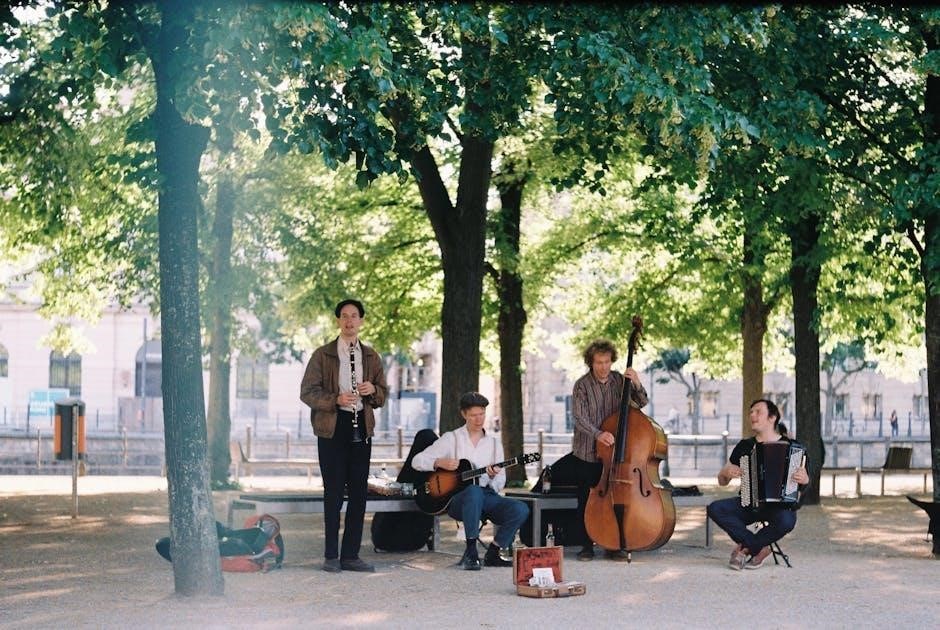
6.1 Mozart’s Final Instrumental Work
Mozart’s Clarinet Concerto in A Major, K.622, is profoundly significant as his final purely instrumental work. Composed in 1791, the same year of his death, it represents the culmination of his compositional mastery. The concerto was written specifically for clarinetist Anton Stadler, a close friend, showcasing the clarinet’s expressive capabilities. Its lyrical elegance and structural sophistication reflect Mozart’s deep understanding of the instrument, which was relatively new at the time. This work not only highlights Mozart’s innovative spirit but also serves as a poignant farewell to his career in instrumental music. The PDF sheet music of this concerto is widely available, allowing musicians and enthusiasts to study and perform this timeless masterpiece, ensuring its legacy endures.
6.2 The Role of Anton Stadler
Anton Stadler, a renowned clarinetist and close friend of Mozart, played a pivotal role in the creation of the Clarinet Concerto. Stadler’s exceptional talent and expressive playing style deeply inspired Mozart, leading him to compose this masterpiece specifically for his friend. The concerto was tailored to showcase Stadler’s technical prowess and emotional depth, reflecting the strong artistic collaboration between the two. Stadler’s influence extended beyond performance; he was also known for popularizing the basset clarinet, an instrument with an extended lower range, which Mozart incorporated into the work. After Mozart’s death, Stadler continued to champion his music, ensuring the concerto’s enduring legacy. The PDF sheet music of this concerto remains a testament to Stadler’s enduring impact on its creation and interpretation, making him an integral figure in its history and performance tradition.
6.3 Legacy and Influence on Later Composers
Mozart’s Clarinet Concerto in A Major, K.622, has left an indelible mark on classical music, inspiring countless composers and performers. Its lyrical beauty, structural innovation, and expressive depth set a new standard for clarinet repertoire. Composers such as Carl Maria von Weber and Johannes Brahms drew inspiration from Mozart’s mastery of melodic writing and orchestration. The concerto’s influence extends beyond the classical era, with modern arrangers and musicians continuing to adapt and reinterpret it. As a result, it remains a cornerstone of classical music education and performance. The availability of PDF sheet music has further cemented its legacy, allowing musicians worldwide to study and perform this timeless work. Its enduring popularity underscores Mozart’s genius and his profound impact on the evolution of instrumental music.
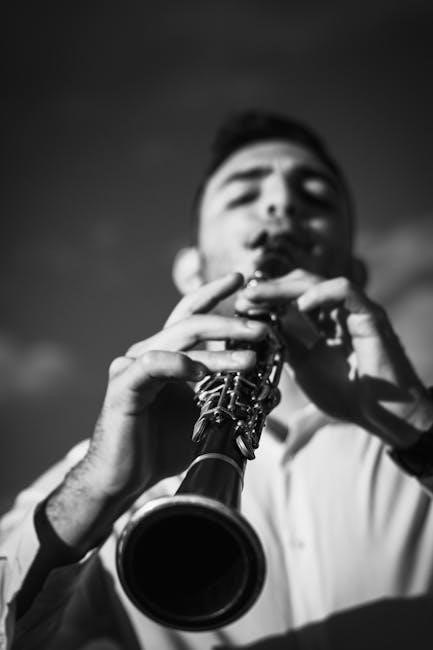
Resources and Further Reading
Discover Mozart’s Clarinet Concerto through platforms like Musopen.org and Musescore, offering free PDF downloads. Explore historical scores, modern arrangements, and educational resources to deepen your understanding and appreciation of this masterpiece.
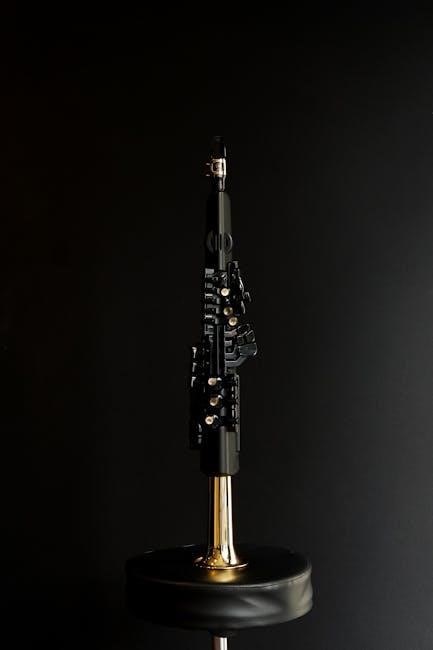
7.1 Recommended Sheet Music Platforms
For accessing Mozart’s Clarinet Concerto in PDF format, several platforms stand out. Musopen.org offers free, high-quality downloads of the concerto, along with MP3 recordings for accompaniment. Musescore.com provides a vast library of user-contributed and professionally arranged scores, including the Clarinet Concerto in various transcriptions. The International Music Score Library Project (IMSLP) is another excellent resource, hosting historical scores and parts for orchestral and solo performances. Additionally, platforms like Sheet Music Plus and Musicnotes offer licensed versions with precise notation and arrangements for clarinetists. These platforms cater to both professionals and enthusiasts, ensuring easy access to Mozart’s masterpiece for study, performance, and enjoyment.
7.2 Historical Scores and Manuscripts
Exploring Mozart’s Clarinet Concerto through historical scores and manuscripts provides invaluable insights into its composition and evolution. The original manuscript, written in 1791, is preserved in libraries and archives, offering a glimpse into Mozart’s creative process. Digital platforms like Manuscriptorium and IMSLP host scanned versions of these historical documents, allowing researchers and musicians to study the composer’s original notation. Additionally, institutions such as the Mozart Archive in Salzburg offer access to facsimiles of the score, revealing details like corrections and annotations made by the composer. These historical resources are essential for scholars aiming to perform or interpret the concerto authentically, ensuring that Mozart’s intentions are preserved and respected in modern performances. By examining these primary sources, one can appreciate the craftsmanship and artistry that went into creating this timeless masterpiece.
7.3 Modern Arrangements and Transcriptions
Modern arrangements and transcriptions of Mozart’s Clarinet Concerto have breathed new life into this timeless piece, making it accessible to a broader audience. Musicians and arrangers today create PDF transcriptions for various instruments, ensuring the concerto’s relevance in contemporary performances. Platforms like MuseScore and Musicnotes offer downloadable versions tailored for solo clarinet, piano accompaniment, and even chamber ensembles. These arrangements often include practice videos and MP3 play-alongs, aiding musicians in mastering the work. Additionally, some transcriptions adapt the concerto for different instrument combinations, such as strings or wind quintets, while maintaining Mozart’s original melodic and harmonic essence. These modern interpretations not only preserve the concerto’s legacy but also introduce it to new generations, fostering appreciation for classical music in diverse settings. By blending tradition with innovation, these arrangements ensure the Clarinet Concerto remains a vibrant part of musical culture.
